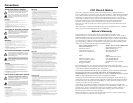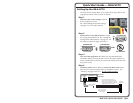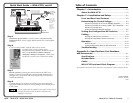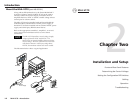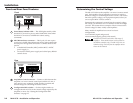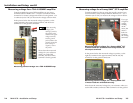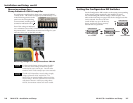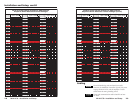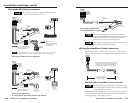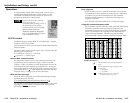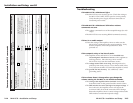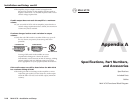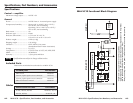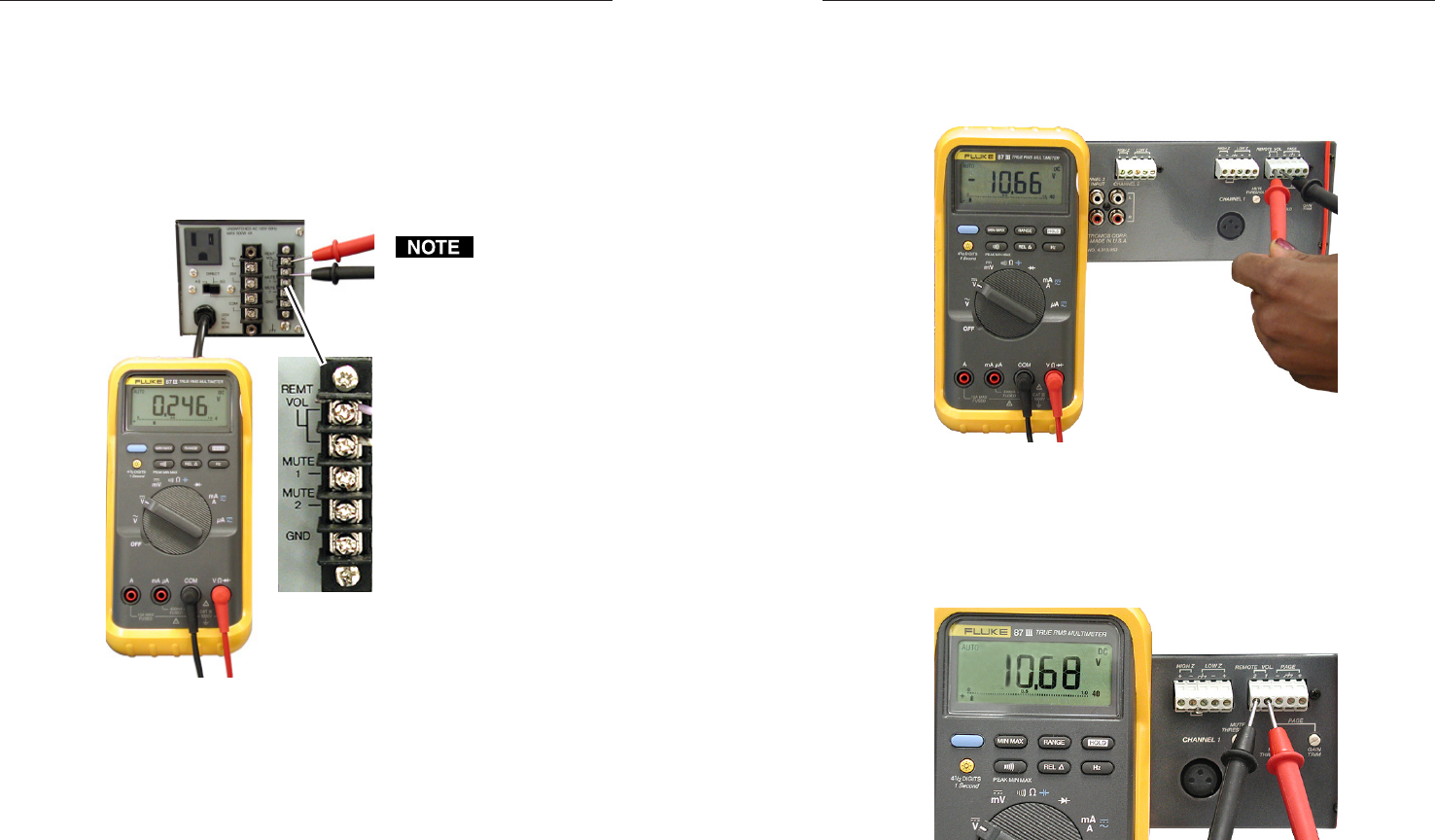
MLA-VC10 • Installation and Setup
MLA-VC10 • Installation and Setup
Installation and Setup, cont’d
2-5
Measuring control voltage for a Peavey UMA
™
35T
II: meter leads are oriented incorrectly relative to
the amp’s terminals
In the picture below the measured voltage is positive, so the
right (#1) terminal is the signal terminal, and the left (#2)
terminal is for the ground connection.
Measuring control voltage for a Peavey UMA
™
35T
II: meter leads are oriented correctly
Write down the measured voltage for your reference when you
set the DIP switches, and note which terminal is for the ground.
2-4
Measuring control voltage for a TOA A-903MK2 amp
When measuring
voltage, if the
reading is positive,
the positive probe
indicates the signal
voltage terminal,
and the ground
probe indicates the
ground connection.
If the voltage is
negative, reverse
the probes.
Write down the measured
voltage for your reference
when you set the DIP
switches, and note which
terminal is for the ground.
If you get
a negative
voltage
reading
on the
meter, the
meter’s
leads are
touching
the wrong
terminals.
Measuring voltage for a TOA A-903MK2 amplifier
Control terminals for several TOA amplifiers are two screw
terminals labeled “REMT VOL”. They do not indicate which
terminal is for control voltage and which is for the ground. Use
a voltmeter (set to VDC) to measure the voltage as shown here.
In the picture below the measured voltage is positive, so the
upper terminal is the signal voltage terminal, and the lower
terminal is for the ground connection.
Measuring voltage for a Peavey UMA
™
35T II amplifier
Control terminals for Peavey amps also usually consist of two
screw terminals, in this example labeled “Remote Vol”. Use a
voltmeter (set to VDC) to measure the voltage as shown below.




